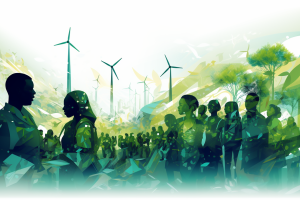Support migrant centric journalism today and donate

By Sanwar Ali:
The United States has a rich history of being a beacon for immigrants worldwide, promising opportunities for a better life. However, the road to legal immigration is peppered with hurdles that can seem insurmountable to many. Based largely on the recent Cato report this article outlines the complexities, challenges, and possible solutions to navigate the labyrinth of U.S. legal immigration. This report is mainly about permanent immigrant visas. We also briefly mention non-immigrant visa categories.
The U.S. Legal Immigration System: An Overview
Before delving into the intricacies of the immigration process, let's stop and take a look at the grand scheme of things. Essentially, the U.S. immigration system is divided into several categories, each with its unique eligibility criteria and quotas.
The Presumption of Ineligibility
Historically, the U.S. immigration policy welcomed everyone unless they fell under a specific ineligible category. However, the Immigration Act of 1924 flipped this principle on its head. The act presumed every individual as ineligible to immigrate unless they proved otherwise. As a result, almost 99% of all potential immigrants are unable to legally migrate to the United States.
The Five Gateways to U.S. Legal Immigration
Anyone seeking to immigrate to the U.S. must fall into one of the five immigrant routes. These include the refugee program, diversity lottery, family sponsorship, employment-based self-sponsorship, and employer sponsorship. Each of these routes has its unique sets of challenges.
The Five US Immigration Routes
1. Refugee Program: A Glimmer of Hope for the Displaced
The refugee program offers a legal route to those fearing persecution in their home countries. However, the eligibility criteria are stringent, and the admission process is prolonged. Not to mention, the chances of receiving a U.N. referral and subsequently being admitted under the refugee program are less than 1%.
2. Diversity Lottery: The Unlikely Jackpot
The diversity lottery grants 55,000 green cards annually. To qualify, applicants must demonstrate financial independence, possess a high school qualification or equivalent, or two years of work experience, and hail from a country with low immigration rates to the U.S. However, the odds of winning this lottery have dropped by more than 90% since its inception in 1995.
3. Family Sponsorship: A Long Wait for a Reunion
Family sponsorship primarily caters to the immediate relatives of U.S. citizens and legal permanent residents. However, the waiting period due to immigration caps could stretch over decades, causing a backlog of about 8 million cases.
4. Employment-Based Self-Sponsorship: The Elusive Path for the Elite
The employment-based self-sponsorship category caters to a rare set of individuals with extraordinary abilities, exceptional educational qualifications, or substantial financial resources. However, even among these individuals, the denial rate in 2019 stood at over 40%.
5. Employer Sponsorship: A Tangled Web of Red Tape
Employer sponsorship theoretically offers a chance to anyone with an employer sponsor in the U.S. However, the lengthy, costly, and convoluted procedures deter many employers from pursuing this route.
The Struggle to Secure a Legal U.S. Visa
Immigrants seeking to secure a legal U.S. visa often encounter prolonged waiting periods, steep application costs, and intricate requirements. Many people apply under temporary non-immigrant visas such as the H1B visa, L1 visa, E2 visa, O1 visa, J1 visa, TN visa which is much faster.
The Need for a More Accommodating Legal Immigration System
The U.S. legal immigration system is much stricter than it was many years ago. Demand for immigrant visas far outstrips demand. In 2018, only 1 million out of the 32 million people who sought a green card were successful. Moreover, the U.S. ranks in the bottom third among wealthy countries in terms of the foreign-born population.
The Way Forward
Many US businesses and others feel that legal immigration is beneficial for the U.S. economy. That it it's crucial to do away with hard caps and strict categorical limits. Perhaps a more open immigration system would be a way forward. It would also reduce the costs associated with enforcing restrictive laws and curb illegal immigration.
Immigration is a complex issue, and the journey to legal status can be long and challenging. Many people find that it is not feasible to gain a "Green Card",
workpermit.com helps with US Work Visa: L1, H1B, E2, and O1 Visas
There are various types of US visas that individuals can apply for, depending on their circumstances. Some of the most common employment-based visas include:
L1 visa: This visa is for intracompany transferees who work in managerial or executive positions or have specialized knowledge.
H1B visa: This visa is for specialty occupations that require theoretical or technical expertise in specialized fields.
E2 visa: This visa is for investors who have made a significant investment in a US business and, management or essential skills employees. Only certain nationalities can apply.
O1 visa: This visa is for individuals with extraordinary abilities in the arts, sciences, education, business, or athletics.
Workpermit.com is a specialist visa services firm with over thirty years of experience dealing with visa applications. For more information and advice, please contact us on 0344 991 9222 or at london@workpermit.com(link sends e-mail)(link sends e-mail)





















